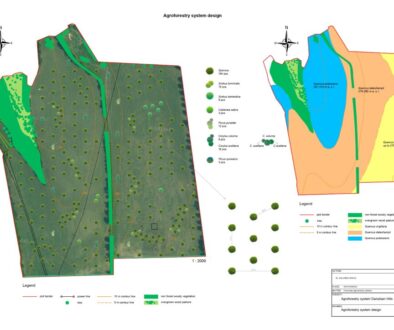Regenerative Agriculture in the Global Garment Industry: Promoting a More Sustainable Fashion Cycle
For her Master thesis, Amber van Unen (University of Amsterdam) looked at the role of regenerative agriculture (including agroforestry) in the transition towards more sustainable practices in the fashion industry. Developed in the context of the ‘International Development Studies’ programme, this research underscores the significant potential of regenerative agriculture in enhancing the resilience of farms to climate change, improving soil health, promoting biodiversity, and sequestering carbon in the soil. It also reveals that regenerative agriculture can improve supply chain integrity, waste management, and the financial security of farmers. Fashion brands play a pivotal role in advocating for regenerative practices, educating consumers, and driving demand for more sustainable products. Regenerative grazing emerged as a particularly promising practice.
Despite the potential benefits, transitioning to regenerative agriculture presents challenges, including financial burdens, resistance among farmers, pricing issues, and a lack of supportive policies and certification frameworks. Moreover, the research illuminates a policy gap in the European Union’s current approach to sustainability within the garment sector. While the EU has several sustainability policies, they are broad and may not address the unique needs of the garment sector. Therefore, there is room for more targeted action, particularly concerning the promotion and implementation of regenerative agricultural practices.
Based on the research findings, the EU could consider the following strategies to address this policy gap:
o Sector-Specific Regulations: Develop and implement regulations that are specifically designed to support and incentivize regenerative agricultural practices within the garment sector. This could include policies that encourage the use of regenerative fibres, promote responsible waste management, and reward brands for transparency in their supply chains;
o Financial Incentives: Provide financial incentives to farmers who transition from conventional to regenerative agricultural practices. This could help to offset the initial costs of transition and reduce financial risks, which are significant barriers to adoption identified in the research;
o Education and Knowledge Sharing: Invest in education and knowledge-sharing initiatives aimed at increasing awareness and understanding of regenerative agriculture among farmers and other stakeholders in the garment sector. This could involve collaborating with non-governmental organizations;
o Certification and Standards: Develop robust certification frameworks and guidelines for regenerative agricultural practices in the garment sector. This would help to enhance transparency, credibility, and consumer confidence, driving demand for regenerative products and making regenerative practices more economically viable.
By implementing such measures, the EU could address the existing policy gap and support a more sustainable and resilient garment sector. This would also align with the broader objectives of the European Green Deal and the Circular Economy Action Plan, while specifically catering to the unique needs and opportunities presented by the garment sector.



